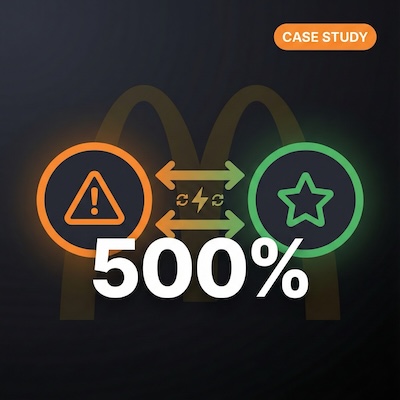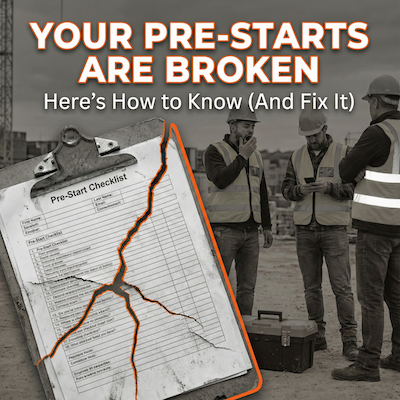The Science of Rewards: What Self-Determination Theory Really Tells Us About Recognition at Work
There's a persistent myth in workplace culture conversations that "extrinsic rewards don't work" or that "Deci and Ryan debunked Skinner." As someone deeply interested in how we can create more positive, productive workplaces, I've found these oversimplifications frustrating.
Yes, Deci and Ryan did challenge fundamental aspects of Skinner's behaviorism, demonstrating that human motivation extends beyond simple reinforcement. But the frustration comes when people oversimplify this insight to dismiss all forms of recognition and reward as "just behaviorism," which is overly reductionist and misses the sophisticated nuance of both SDT and thoughtful recognition systems.
Having just revisited Deci and Ryan's seminal work on Self-Determination Theory (SDT), I want to clarify what the research really says about rewards and recognition – and why approaches that focus on immediate positive reinforcement align with the science when implemented thoughtfully.
The Nuance That Gets Missed
First, let's clear something up: Deci and Ryan never claimed that all rewards are detrimental. In fact, they explicitly state:
"The fact that rewards can, under well-specified conditions, yield detrimental effects on intrinsic motivation does not mean that SDT is against all rewards... Indeed, we find that rewards can have many positive motivational functions, especially in areas in which behavior is not intrinsically motivating."
This is critical. The workplace contains many tasks that aren't intrinsically fascinating, and in these contexts, thoughtful recognition can be powerful.
When Rewards Work vs. When They Don't
The research shows several key factors determine whether rewards enhance or diminish motivation:

What Diminishes Intrinsic Motivation:
- Expected, contingent rewards - When people are told beforehand that they'll receive a specific reward for completing a task, they often shift from doing it because it's interesting to doing it for the reward.
- Controlling language and contexts - Even positive feedback can be undermining if delivered with phrases like "just as you should have" or in evaluative contexts that feel controlling.
- Rewards that signal low value - Using rewards can sometimes unintentionally signal that an activity isn't worth doing for its own sake.
It's important to acknowledge that poorly implemented rewards can indeed be worse than no recognition at all—undermining autonomy, creating unhealthy competition, or diminishing intrinsic interest. The difference between recognition that harms and recognition that helps isn't in whether we recognize good work, but in how thoughtfully and respectfully we do so.
What Enhances Motivation:
- Unexpected recognition - Recognition that comes as a surprise after task completion doesn't undermine intrinsic motivation.
- Competence-focused feedback - Positive feedback that emphasizes growth, mastery, and development generally enhances intrinsic motivation.
- Autonomy-supportive contexts - Recognition delivered in ways that maintain a person's sense of choice and self-direction.
As Zig Ziglar wisely noted, "You don't build a business. You build people, and people build the business." This aligns strongly with SDT's focus on creating conditions where people can thrive.
The Intrinsic vs. Non-Intrinsic Distinction
Let's be honest—not every workplace task is inherently exciting or intrinsically rewarding, yet many of these tasks are essential for organizational success and safety. It's precisely in these contexts where thoughtful recognition proves most valuable, bridging the motivation gap for activities that might otherwise feel mundane but remain critically important.

For example:
- Proper documentation may not be thrilling, but it's vital for compliance and knowledge transfer
- Following safety protocols might feel repetitive, but it saves lives
- Administrative tasks rarely create flow states, but they keep operations running
When tasks aren't naturally engaging, well-designed recognition helps connect these activities to broader meaning and value, while acknowledging the effort involved.
Real-World Applications
The most effective workplace recognition systems reflect these nuances:
- Immediate, unexpected recognition - Recognizing good work in the moment, rather than only at scheduled performance reviews.
- Competence-affirming feedback - Highlighting specific skills, growth, and contributions rather than generic praise.
- Meaningful rewards - As Dale Carnegie observed, "People work for money but go the extra mile for recognition, praise, and rewards."
- Autonomy-supportive delivery - Recognition that acknowledges choice and doesn't feel controlling.
Richard Branson captured this well: "I have always believed that the way you treat your employees is the way they will treat your customers, and that people flourish when they are praised." The science supports his intuition – people do flourish with praise, but only when that praise supports their sense of competence without undermining their autonomy.
The Three Psychological Needs
At its core, SDT identifies three fundamental psychological needs: autonomy, competence, and relatedness. The most effective rewards and recognition systems support all three:

- Autonomy - People need to feel they have choices and that their actions come from within.
- Competence - People need to feel effective and capable of mastery.
- Relatedness - People need to feel connected to others and part of something meaningful.
When workplace recognition addresses these needs, it puts people in an optimal psychological state for growth, engagement, and productivity.
For readers interested in exploring the fundamentals of Self-Determination Theory in more depth, our previous post provides an excellent primer on this foundational framework of human motivation.
Why This Matters for Modern Workplaces
Understanding these nuances is increasingly important in modern work environments where intrinsic motivation often drives innovation, creativity, and discretionary effort.
As Stephen R. Covey advised, "Always treat your employees exactly as you want them to treat your best customers." Recognition that respects autonomy while affirming competence creates a virtuous cycle that benefits everyone.
Putting Science Into Practice
At Scratchie, this science informs how we approach recognition. Our approach to on-the-spot recognition aligns with what Self-Determination Theory recommends:
- Recognition is immediate and often unexpected
- It focuses on specific behaviors and competencies
- It supports autonomy by allowing choice in how rewards are used
- It builds relatedness through shared celebration of achievements
As Bob Nelson observed, "Take time to appreciate employees, and they will reciprocate in a thousand ways." The science of SDT doesn't just confirm this wisdom – it helps us implement it more effectively.
Conclusion
Far from debunking the value of recognition, Self-Determination Theory provides a sophisticated framework for doing it right. When aligned with SDT principles, recognition systems can elevate workplace culture in ways few other interventions can, resulting in happier, more productive, and safer employees.
By understanding when and how rewards work, we can create workplaces where people thrive – not despite recognition, but because recognition is delivered thoughtfully, with respect for autonomy, competence, and relatedness.
The next time someone tells you "rewards don't work," remember that the reality is far more nuanced. It's not whether we recognize good work that matters, but how we do it.
What's your experience with recognition in the workplace? Have you seen examples of recognition that supported or undermined intrinsic motivation? I'd love to hear your stories in the comments below. Or email me directly.









.svg)
